30. The Gydan Peninsula
The Siberian coast is a hotspot for ancient archeological finds, but never before have archeologists found artifacts so far north. The icy terrain is constantly hit with strong, freezing winds, making the territory some of the most treacherous on earth.
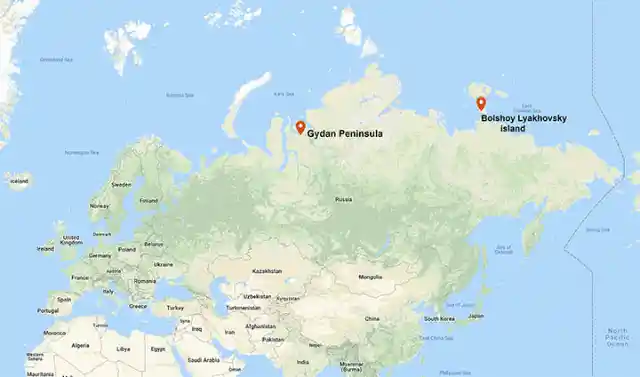
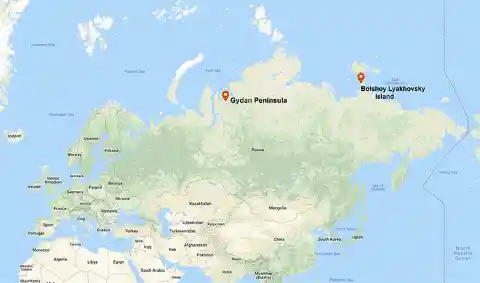
As local scientists were examining the area to determine the level of permafrost loss, they stumbled across much more than they bargained for.
29. The Kara Sea
The Peninsula makes up 61,776 square miles next to the Kara Sea. The area is covered by permafrost and rarely reaches above -3 degrees Celsius.

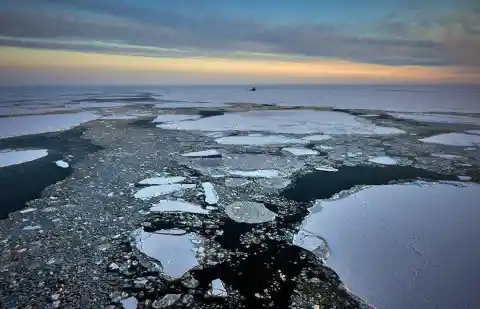
Although there are no inhabitants in the peninsula, it borders the Yamal-Nenets autonomous district, where nearly 522,904 people live.
28. Melting Permafrost
The regions permafrost is melting, and combined with harsh winds, it has created the perfect environment for uncovering artifacts that will shed more light on the ancient people of the nearby regions.
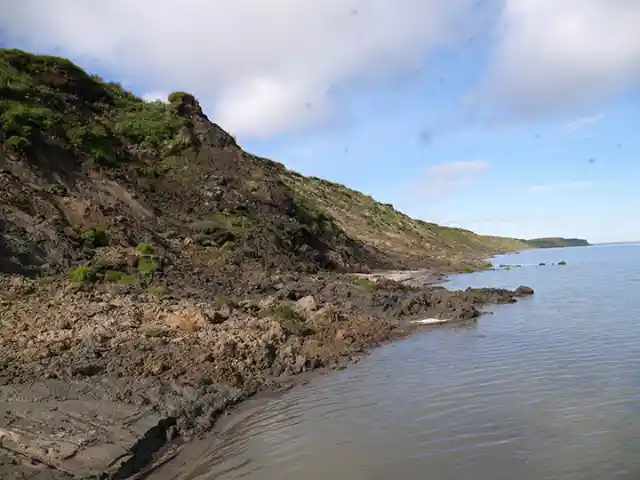
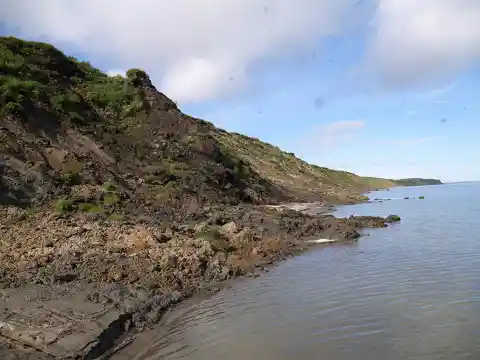
Andrei Gusev, the senior researcher at the archaeology department of the Center for Arctic Studies noted that, “Archaeological studies of the area around Lake Parisento and the Yuribei River, located beyond the Arctic Circle, have resulted in surprise finds such as a bronze Iranian cup dated to the Middle Ages (5th to 15th centuries).”
So what’s so special about this bronze cup?
27. So Far North
Gusev told the Siberian Times, “Artifacts from this era have been found in West Siberia before, but never so far in the northeast, let alone in the Arctic. The exact age of the cup will be determined after further studies.”
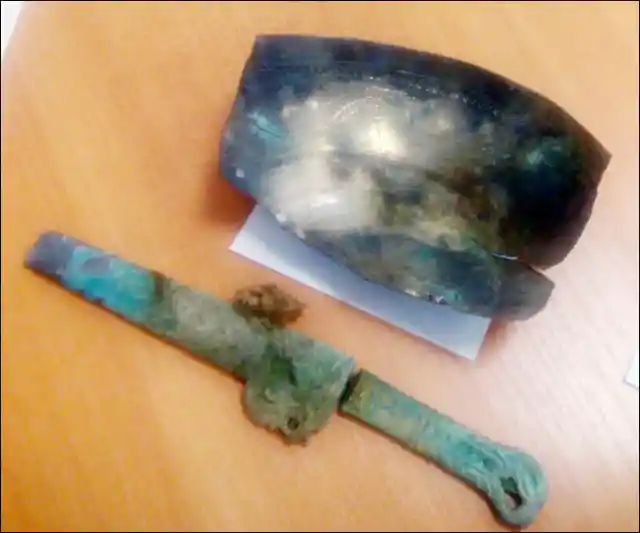

Studying these findings will allow scientists to better understand the prehistoric people that lived in these areas, including their burial practices, lifestyles, and belief systems. The ancient bronze cup wasn’t the only thing they uncovered, either.
26. Eight New Finds
In fact, archaeologists have found a total of eight artifacts, including more bronze items, as well as pieces made of ceramic and iron.

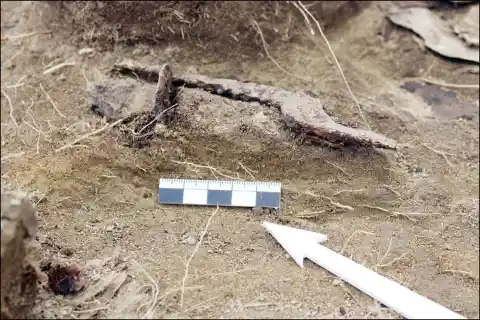
Elaborating on the findings, Gusev told Siberian Times, “It was a ‘random find’: that is, there was obviously some camp here, people spent some time at this place, and then left. And the cup was left here for some reason. The cultural layer was eroded by wind and we found the fragment of the cup with a ceramic vessel and a bronze knife handle.”
25. 10th Century
Experts say the cup was most likely left there nearly 200 years after it was made, estimating that was around the 10th or 11th century AD.
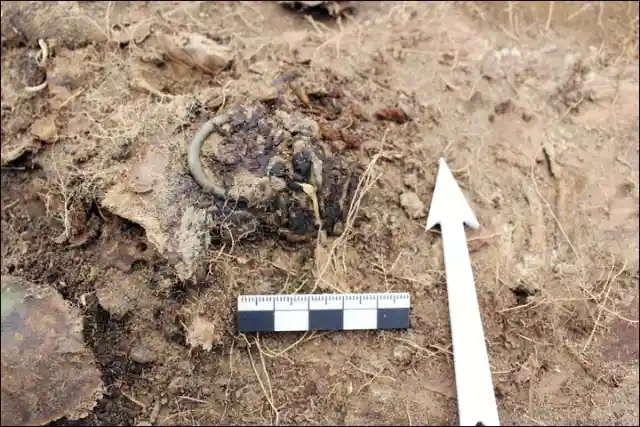
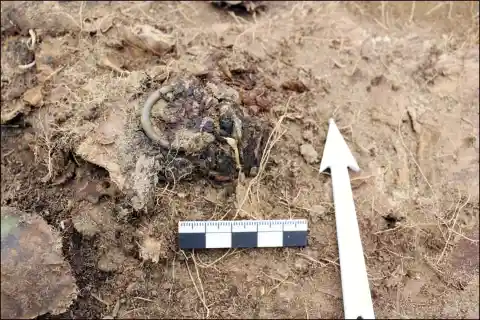
Scientist Arkady Baulo, from Institute of Archaeology and Ethnography, in Novosibirsk believes that items like these were brought over by Central Asian merchants in the 6th and 7th Century AD and quickly became apart of ceremonial practices by the local people.
24. Other Discoveries
Although these ancient discoveries are historically important, surprisingly, they’re not the most interesting to come from the area. In fact, in Septemeber of 2017 archaeologists found the bodies of nine children, all of which were buried with lavish headdresses and decorations.
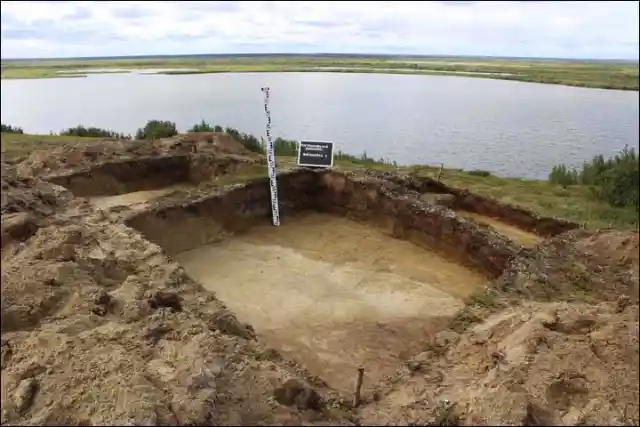
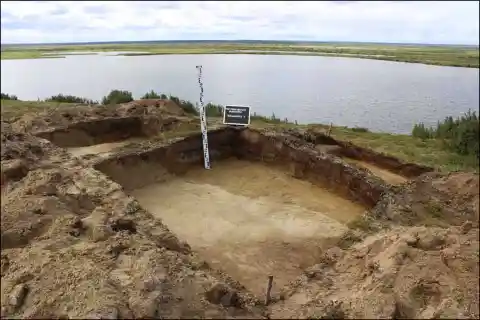
The surprise findings weren’t apart of known ancient cemeteries, as they were all buried alone and spread out within the banks of Tazovsky peninsula.
23. A Child Prince
Due to the child being dressed and ornamented so lavishly, it’s thought that the newest discovery held high ranks, maybe even the title of Prince.
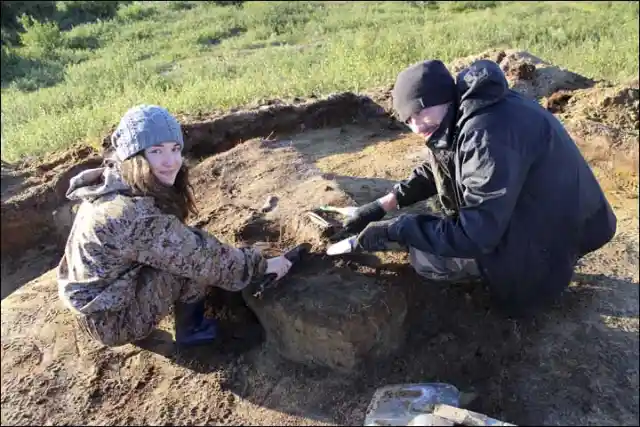
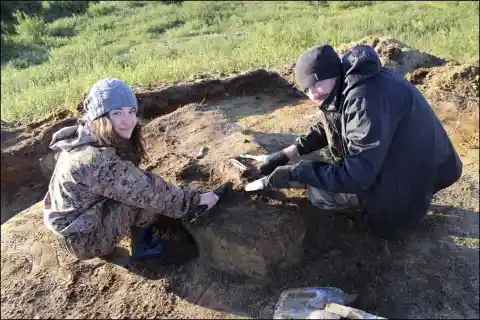
He was buried with furs, a headdress, iron knives, iron rings, and freshly roasted venison, according to the Siberian Times. At the time of death, it’s estimated that he was between the ages of three and seven.
22. Another Child
The previous year in the same area among the highest point of the spurs along the Arctic rivers, a young boy around the age of 14 was unearthed.
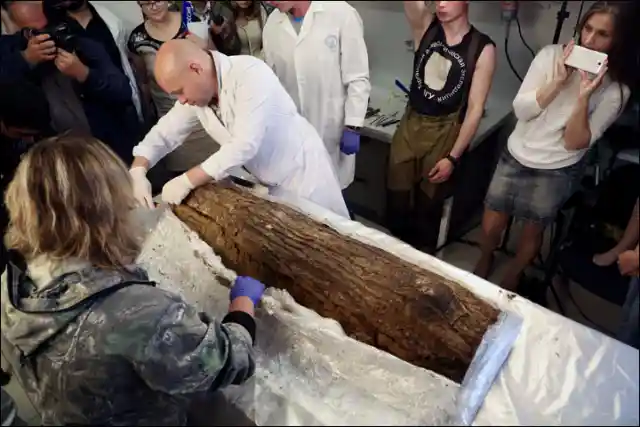
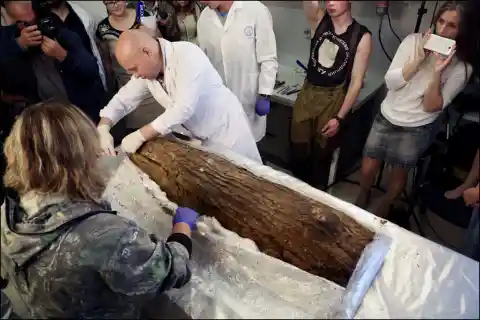
His funeral gown was embroidered with white bronze crosses, among other decorative ornaments, furthering the theory that the children were of high ranks.
21. More Review Necessary
Although a total of nine graves were found in the area, only two have them have been fully excavated. A working theory is that they will all be children, buried there due to their premature deaths.
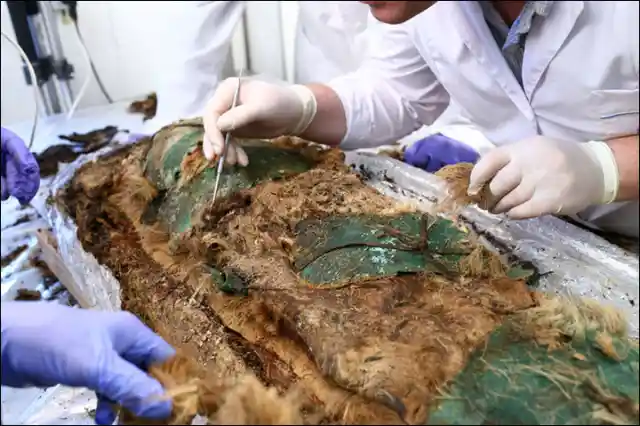
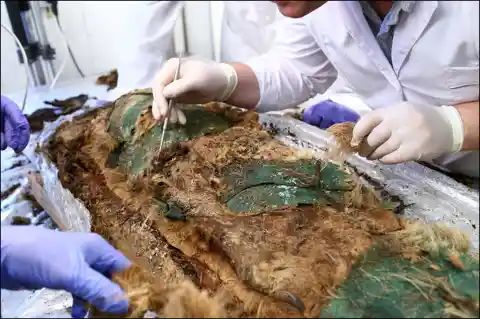
The theory is based on the fact that they all would have been too young to be fully initiated into their societies, which explains their distant locations. Although unsure, scientists have supporting evidence that gives this theory credit, including the name the locals gave the location.
The local Nenets or Samoyeds call the location “The Road of Those Who Went To Heaven.”
20. Firey Send-Off
The scientists also found evidence of fires, with ash and embers preserved near the graves. It’s believed that it was a ceremonial send-off, cooking meat on the bone to fuel the bodies for the after-life.
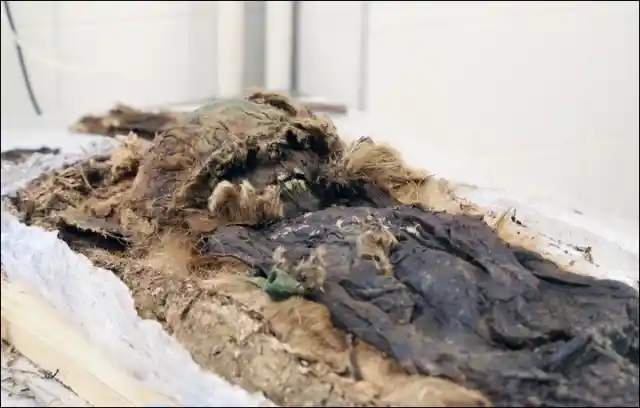
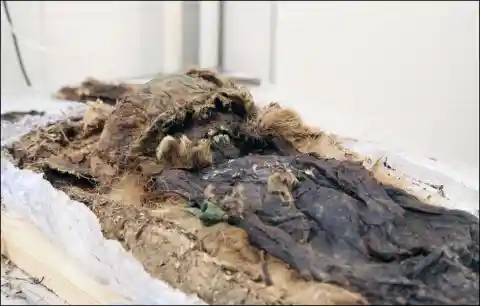
The bodies were also laid on two large pieces of birch bark sewn together, and the headdresses were impeccably made. The outer layer was fur while the inner layer was made from a wool fabric.
There was even more evidence to suggest the burials were carefully and ceremoniously done.
19. Moats
Each grave was given a surrounding moat, which would suggest it was intended to keep them safe from attack. Little is known about the indigenous Sikhirtya, which the bodies are believed to be a part of.


The local Nenets people describe them as small in stature, with light eyes and hair. They fed on primarily fish and whatever they could gather from surrounding forests. But by the 17th century, they had fully assimilated with the Nenets.
As if these discoveries weren’t interesting enough, scientists have found even more.
18. Rare Finds
In the same peninsula that the one-of-a-kind ancient cups were found, scientists also discovered animal bones that sparked some theories about unusual behavior.
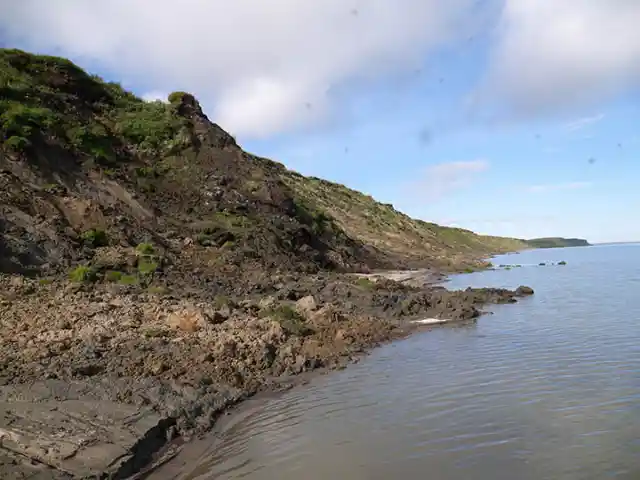
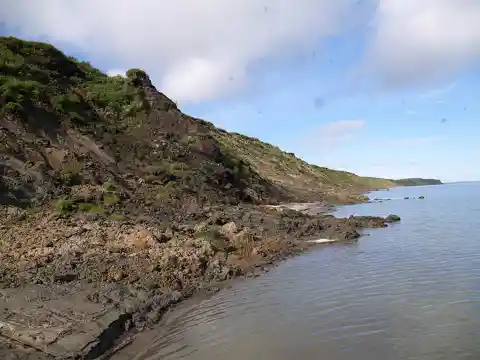
In Septemeber of this year, scientists discovered a staggering 1300 mammal bones from 13 different species all found in a central location in the Gydan peninsula. The bones dated back from 10,000 all the way to 50,000 years ago.
What they suggest is rather interesting.
17. Birthing and Dying Ground
The bones of these creatures were mostly adults, although some were babies, suggesting that this was not only a site that these animals would come to in order to give birth, but also once again during their final days.
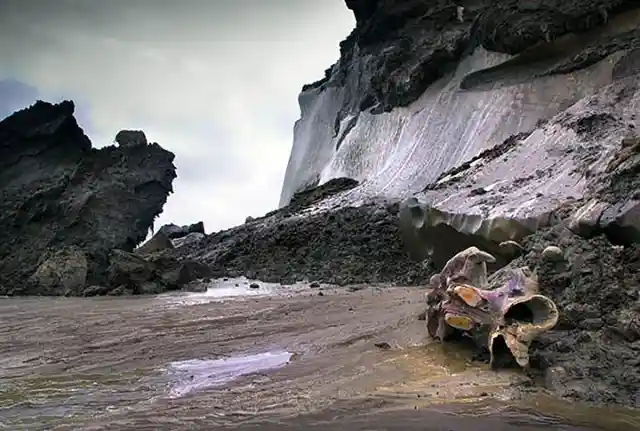
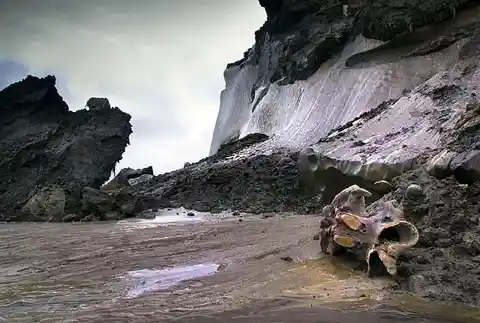
The animals found included the extinct mammoth and cave lion, along with many species of horse, musk ox, bison, bear, rabbits, wolfs, and reindeer. Among the mammals were also bird bones, suggesting this was a multi-species necropolis, prompting further research.
16. The Largest Site Like It
Although the site needs much more excavation, it’s known to be the largest singular bone collection in Arctic Eurasia. As further evidence is collected, it’s well on its way to becoming the largest in the world.
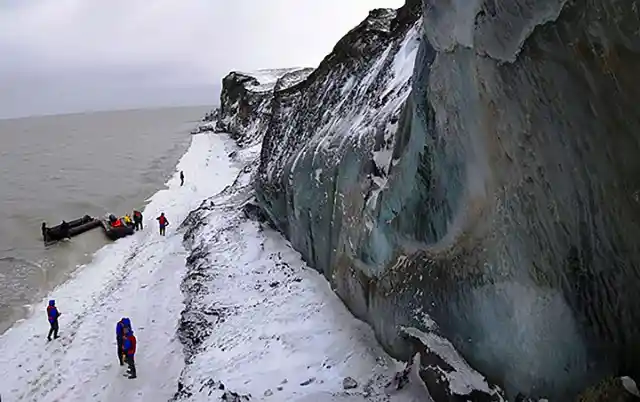
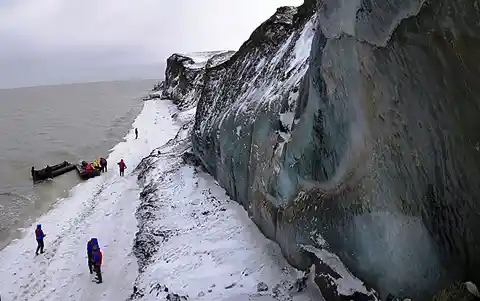
Some of the most important information gathered suggested that many of these animals traveled further north than previously thought, giving scientists a new perspective on these extinct creatures.
15. Unknown Species
Among the experts that discovered the bones, was Pavel Kosintsev, who suggests that the “Territory of the cave lion and brown bear in the north of western Siberia between 10,000 and 50,000 years ago have spread above 71 degrees of northern latitude,” a fact previously unknown.
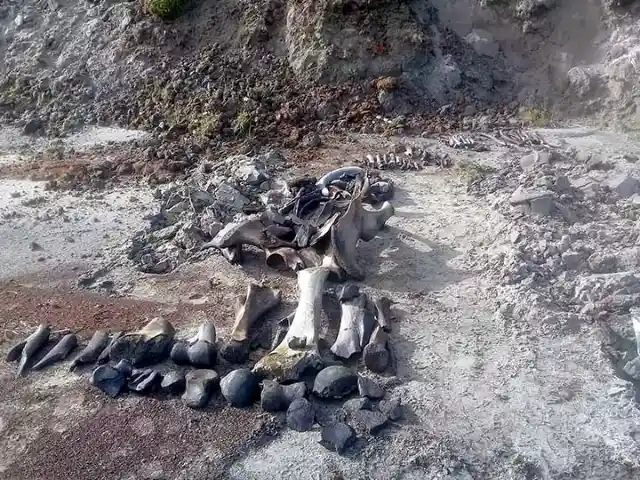

Even more exciting was the discovery of bones that come from unknown species.
14. Mammoths
Prior to this investigation, the largest collection of mammoth bones from the Russian Arctic was located off the southern shore of Bolshoy Lyakhovsky Island. What is still unknown about this discovery is why these animals chose this specific location to give birth and to die.
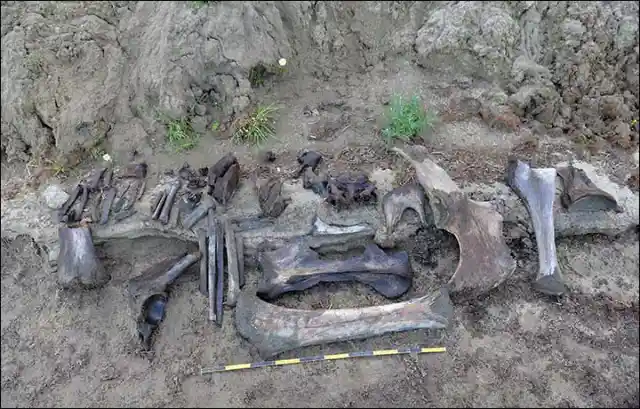
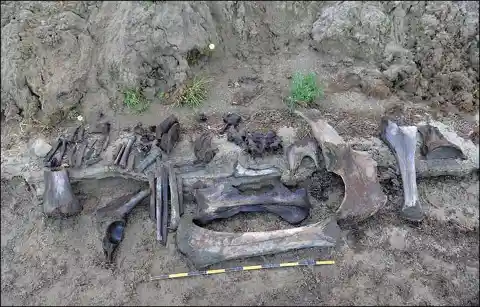
A working theory is there must have been a source of nutrition such as a salt lick or something similar. These animals aren’t the only recent discovery to baffle scientists, either.
13. Warlord
In 2014 scientists discovered an ancient warlord in the Omsk region of western Siberia, off the bank of the Tara River. This regional warrior was found with only one arm, suggesting it was this final injury that took him to his resting place.
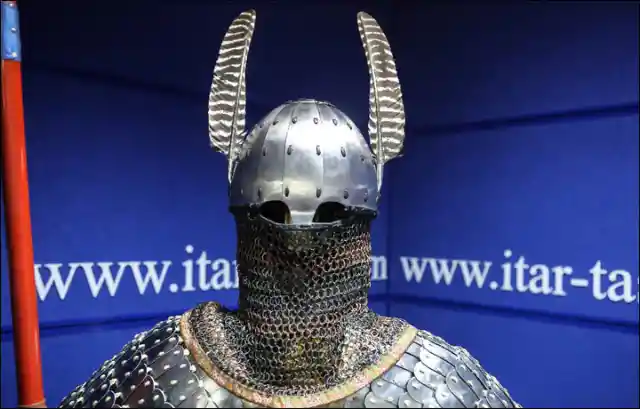
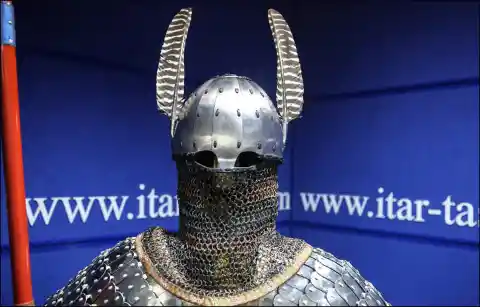
The Moscow Times reported that the site has been under excavation for a couple of years previous to the actual discovery of the body. The mummy is likely from the 11th century, and his characteristics suggest he was unique for his time.
12. A Beast
Standing at a height of five feet nine inches, the warrior was extremely tall for his time. He also died at the age of around 40, an older age for most warriors. Artifacts recovered with his body also suggest he was a fierce warrior, including armor, arrows, and a bronze mirror.
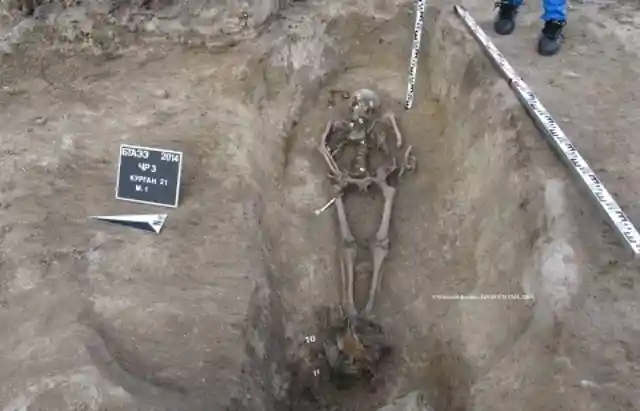
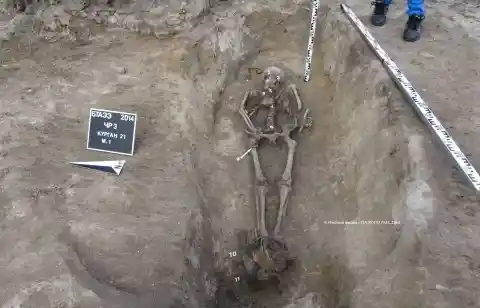
His injuries add to this theory, as he was discovered with a severed right arm and a crushed shoulder. It’s likely that this warrior was killed in battle and carefully buried in a ritual shortly after.
11. Respectful Burial
Although his arm was severed in the middle, it was wrapped and buried right next to the rest of his body. This suggests that he was given the utmost respect up until his death.
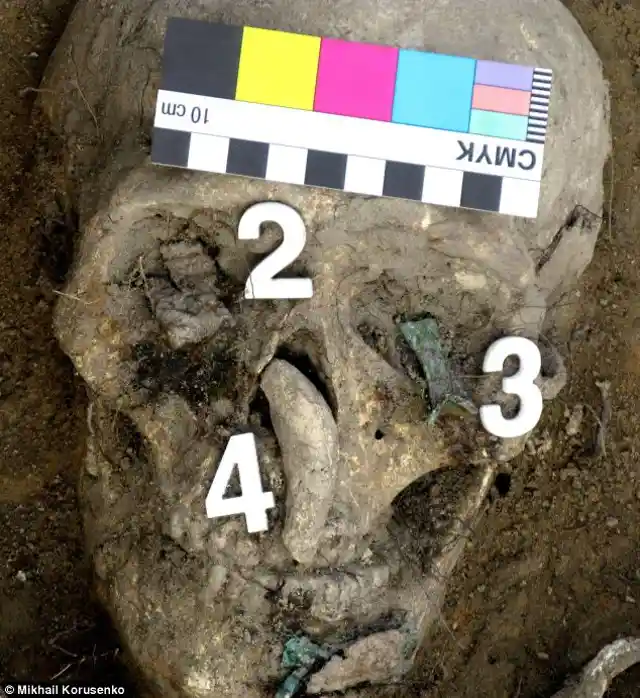
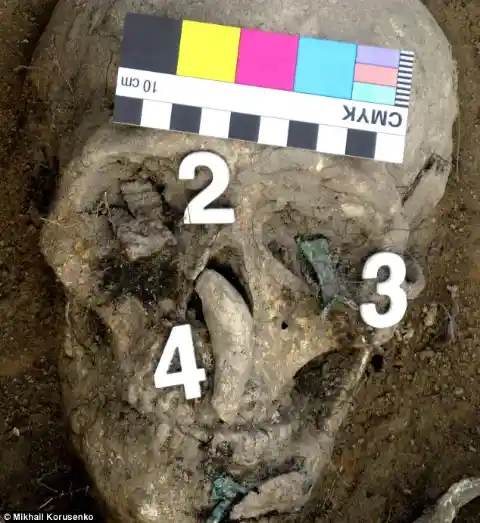
The arrows were still sharp when they were discovered, suggesting that they were new when buried, furthering the significance of his life. He was also buried with a mask which included a bear fang above his nose and other ornaments.
10. High Rankings
The artifacts suggest he wasn’t just any soldier, but one that held high ranks.
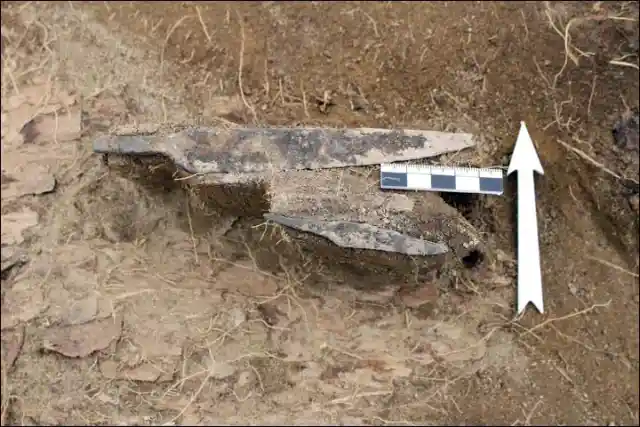
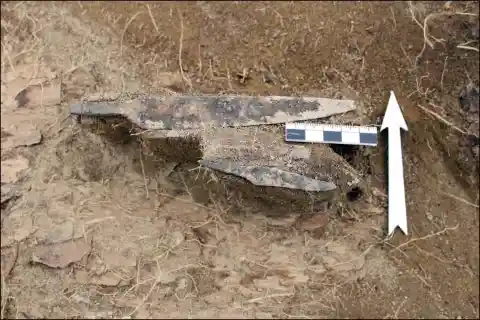
These findings give scientists a better insight into the political and social norms of society during his lifetime, as well as gives more weight to existing theories that they were independent and highly determined individuals.
9. A Day in the Life
The Russian newspaper Rossiyskaya Gazeta suggests that he was probably trained as a warrior since childhood, bred for battle, and led a long life of successful combat.
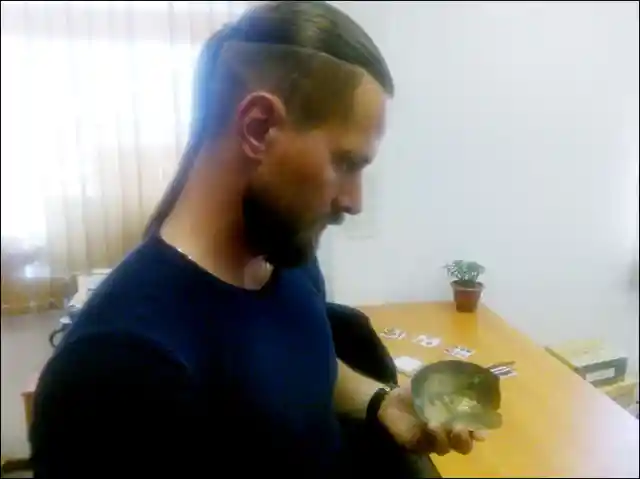
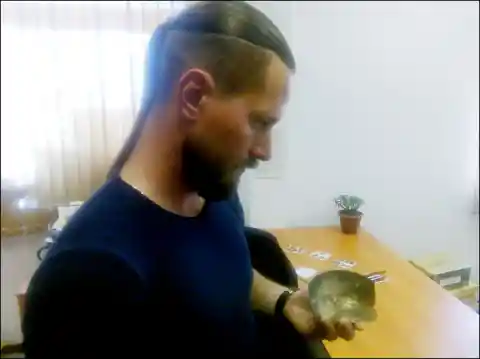
These people fought off the Russian empire until finally joining through negotiations, not force. If you can believe it, we saved the best discovery for last.
8. Copper Masked Mummies
Nearly 19 years ago Russian archeologists uncovered copper masked mummies in the Ukranian village of Zelenyi Yar. It took them nearly 15 years to even been unraveling the mysteries behind these curious burials.
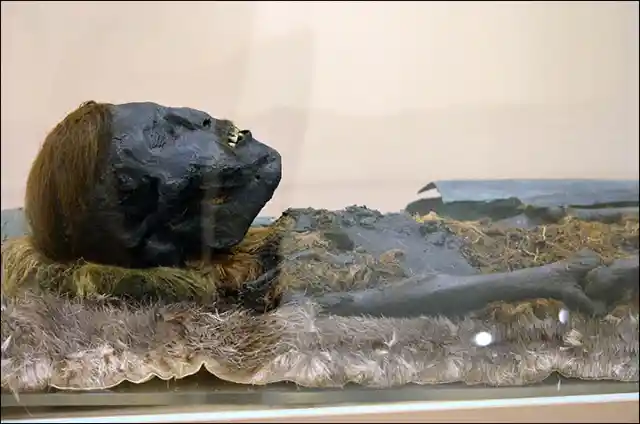
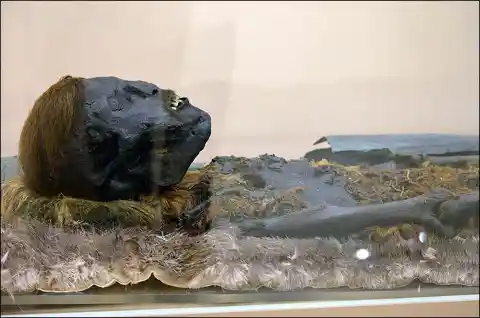
In 2002 scientists had to put a pause on their excavations due to objections by the locals of the Yamal peninsula. When they were finally able to resume in 2014, they realized the significance of their findings.
7. What They Found
34 graves were discovered, and 11 bodies were found in shallow pits only 34 kilometers from the arctic circle.
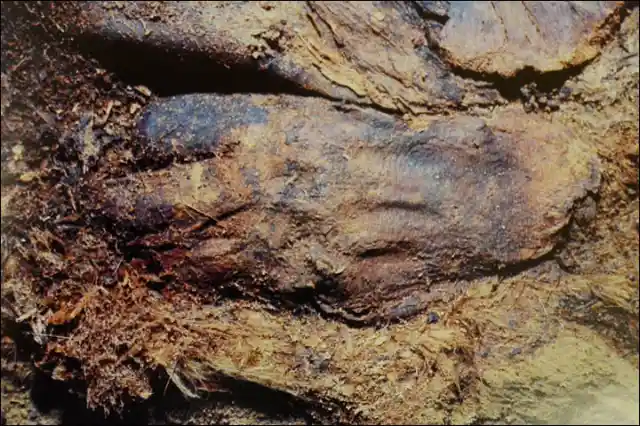

Some were covered from head to toe in copper. But why? Good question.
6. Copper Plating
Five of the 11 mummies were covered from head to toe in copper plating and were also covered in numerous furs from reindeer, beaver, wolverine, to even bear.
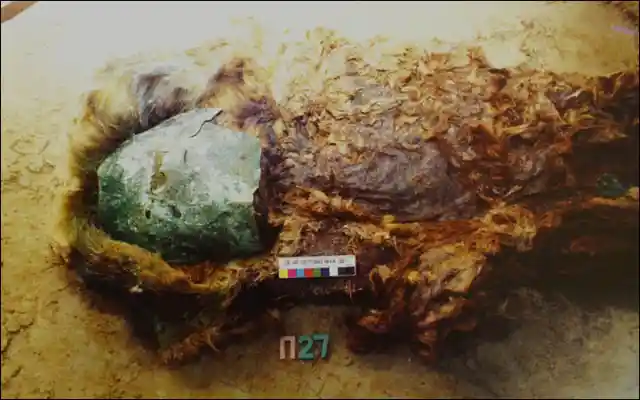
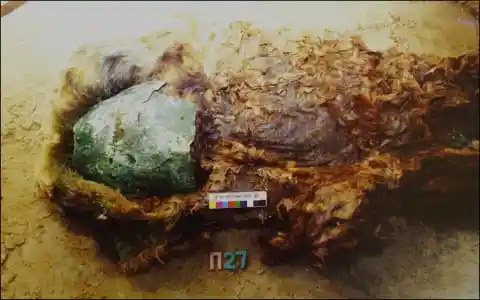
The extent of the significance of these ornaments is unknown, although due to such lavish coverings it’s safe to say they held some political or social significance within the ancient societies.
5. A Medieval Crossroads
Zelenyi Yar is believed to be an ancient crossroads where many people used to trade goods during medieval times. Oddly enough, all of the bodies found had shattered skulls, as if someone purposefully smashed them.
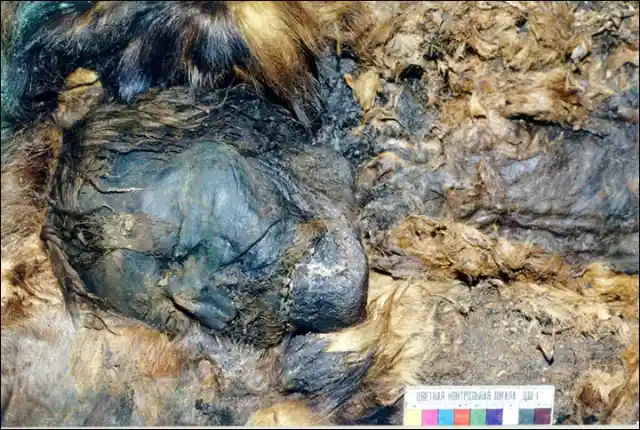
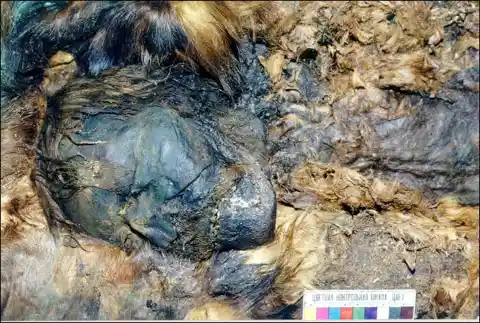
Natalia Fyodorova of the Ural branch of the Russian Academy of Sciences believes the skull smashing was a superstitious act “to render protection from mysterious spells believed to emanate from the deceased.”
While to modern people this might sound harsh, experts have witnessed such things in Bulgaria, where stakes were driven through the hearts of the deceased to prevent them from turning into vampires.
4. Children and Adults
Among the 11 mummies were seven adults and four children, only one of which was a female. All of the children were masked in copper and bound by copper hoops.
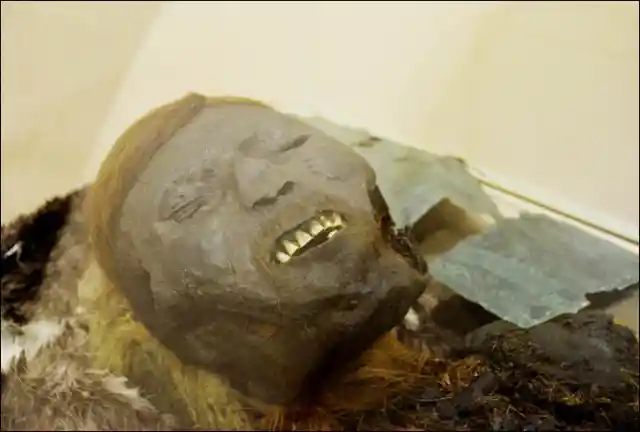
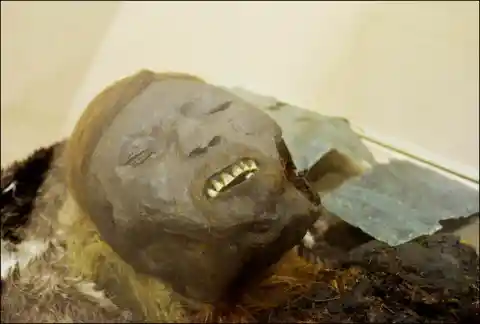
Although scientists are unsure of why most of the corpse were male, they do know that the purpose wasn’t to mummify the remains. The mummification happened by accident caused by the protection of the copper.
3. Other Artifacts
Among the bodies were other ancient artifacts, including an iron knife, silver medallions, a bronze bird figurine, and a Persian bowl that dates back to the 10th century.

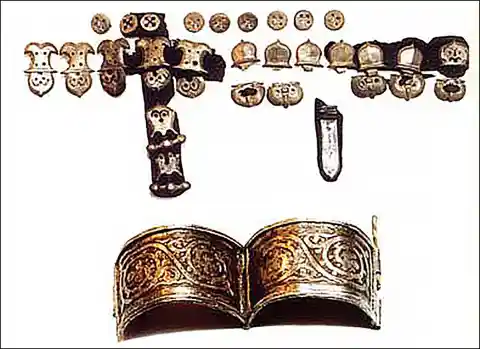
Among the ancient artifacts were also decorative pieces, including belt buckles, bracelets, and earrings, made of silver.
2. Further Testing
Alexander Pilipenko from the Institute of Cytology and Genetics is currently testing the genetics of the mummies to better understand where they came from and what kind of life they might have lived.
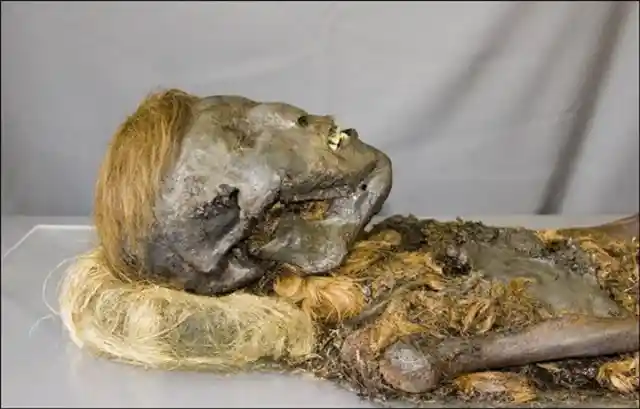
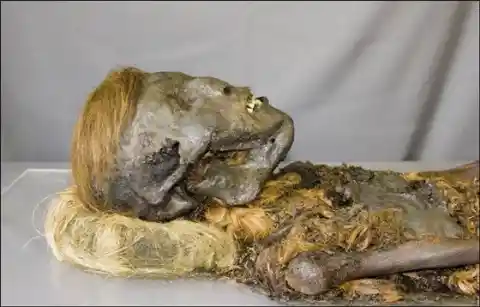
It turns out, a couple of years later, scientists found another mummy, this time it was female.
1. Update!
As scientists continued the excavation of Zelenyi Yar, they found the woman we know today as the “Polar Princess.” She was discovered alongside the men and children, with her hair and eyelashes almost perfectly intact.
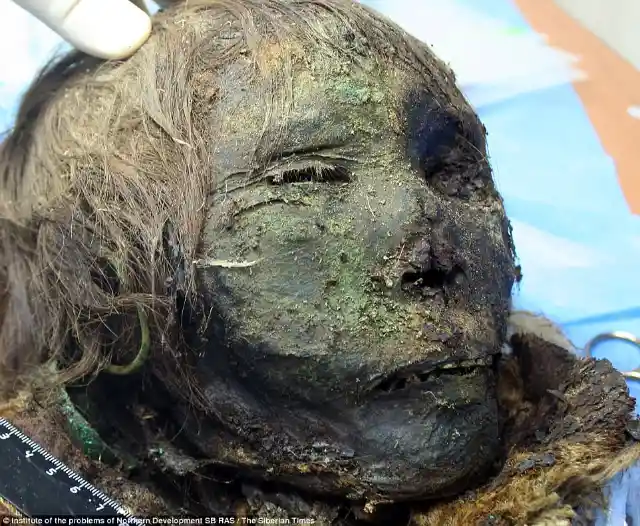
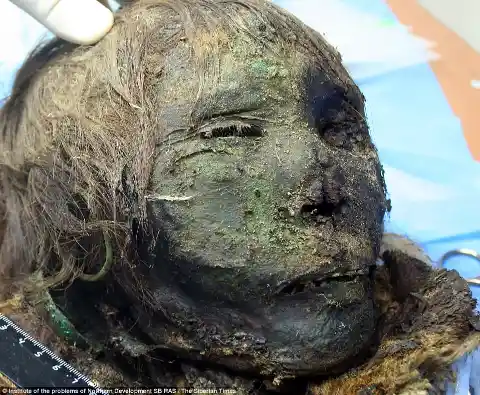
Her existence in the area proved the theory that this was a necropolis for males was incorrect, although they still don’t understand the significance of her social standing. She was around the age of 35 at her death and although her face was perfectly intact due to the copper face mask, her body was not as it was only cocooned in birch bark.